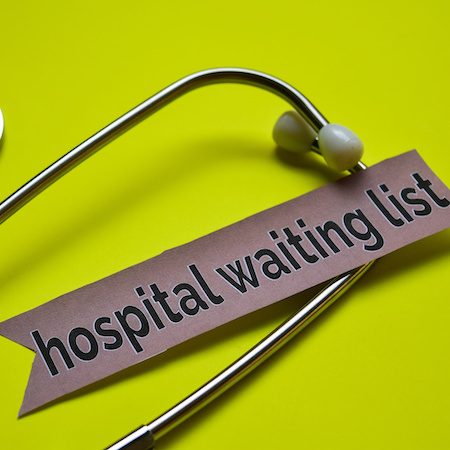The latest performance figures for NHS England, released today (September 14), bring little respite for a health service under immense pressure. The figures show that waiting lists have hit another record high, with 7.7 million people now waiting for treatment.
The figures also show that the NHS in England has experienced its busiest summer ever in A&E, with attendances across June, July and August exceeding 6.5 million (6,522,000); that’s 20,000 more than the previous record in 2019 (6,498,472).
The pressure on emergency care came alongside ongoing industrial action, which has also impacted on waiting lists. Almost 400,000 appointments had to be rescheduled during June, July and August, and in total, 885,154 acute inpatient and outpatient appointments and procedures have been rescheduled, although NHS England says the true impact of strikes is likely to be much higher, as many services avoided scheduling planned appointments for strike days in the first place, in order to prioritise emergency care.
Miriam Deakin, Director of Policy and Strategy at NHS Providers stresses it is “vital” that the government and unions re-open talks to find a solution to the ongoing pay dispute, and says it is “extremely concerning” to see the waiting list hit a new record high and the escalating pressure across the system.
“Challenges including severe staff shortages, capacity constraints – including of beds and equipment – and ongoing strikes are hindering vital progress on performance targets,” she says. “This impacts the whole system, including hospital, ambulance, mental health and community services.”
On a more positive note, and in spite of the growing waiting list and record attendances in A&E, ambulance response times improved for the third month in a row. Category two response times were more than 10 minutes faster in August than the same month last year, and category 1 calls had an average response time of 8.17 (down from 9.08 in August 2022).
The NHS is also making good progress on bringing down the longest waits for patients, with waits of 65 weeks reduced to 96,722 in July, which is down 59% on the peak of 233,051 in June 2021, and down from 149,770 in July last year.
Winter pressures
Winter preparations have been well underway since the Urgent and Emergency Care recovery plan was published earlier this year, with measures to help boost capacity and resilience across the NHS, including care ‘traffic control’ centres to speed up discharge, additional ambulance hours and extra beds.
In a statement also released today, the Health and Social Care Secretary Steve Barclay announced a £200m investment to boost resilience in the NHS and help services through the peak months. An additional £40m has been announced to bolster social care capacity and improve discharge from hospital. These pledges follow a meeting between the Prime Minister Rishi Sunak, the Health Secretary and NHS bosses and clinical leads, which took place yesterday.
Lack of capacity in social care has long been cited as a significant contributing factor to delayed patient discharge, which has a knock-on effect throughout the system, resulting in patients stuck in A&E or in ambulances. A separate report from the Association of Ambulance Chief Executives (‘Taking Stock’) shows that patient handover delays have increased significantly over the last decade, and in the 12 months to March 2023 delays exceeding the 15-minute target were responsible for the loss of nearly two million hours.
Winter vaccine rollout
In response to the emergence of a new COVID-19 variant, the adult covid and flu vaccination programme has been brought forward and starts this week. It will prioritise those at greatest risk, and start with people in care homes and those who are housebound.










